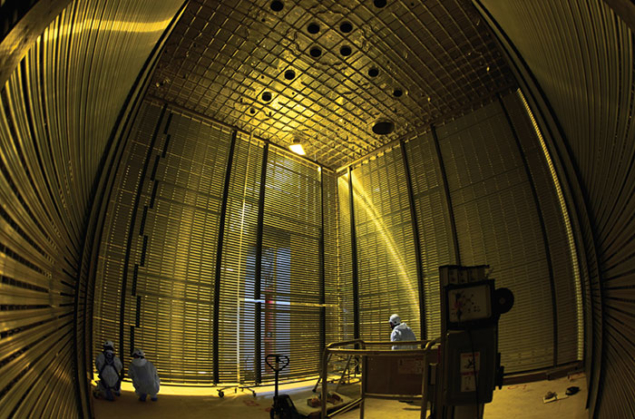
On 16 April, US energy secretary Rick Perry and Indian Atomic Energy Secretary Sekhar Basu signed an agreement in New Delhi to expand the two countries’ collaboration in neutrino science. It opens the way for jointly advancing the Long-Baseline Neutrino Facility (LBNF) and the international Deep Underground Neutrino Experiment (DUNE) in the US and the India-based Neutrino Observatory (INO).
More than 1000 scientists from over 170 institutions in 31 countries work on LBNF/DUNE, construction for which got under way in July 2017. The project will direct the world’s most intense beams of neutrinos from Fermilab accelerators (driven by the new PIP-II machine) to detectors 1300 km away. INO scientists, meanwhile, will observe neutrinos that are produced in Earth’s atmosphere. Scientists from more than 20 institutions are working on INO, which is currently going through approval procedures.
The India–US agreement builds on one signed in 2013 authorising the joint development and construction of particle-accelerator components. Scientists from four institutions in India – BARC in Mumbai, IUAC in New Delhi, RRCAT in Indore and VECC in Kolkata – are contributing to the design and construction of magnets and superconducting particle-accelerator components for PIP-II at Fermilab and the next generation of particle accelerators in India.
Under the new agreement, US and Indian institutions will expand this to include neutrino research projects. DUNE, located about 1.5 km underground, will use almost 70,000 tonnes of liquid argon to detect neutrinos; and an additional detector will measure the neutrino beam at Fermilab as it leaves the accelerator complex. Prototype neutrino detectors are already under construction at CERN, which is also a partner in LBNF/DUNE. INO will use a different technology: an iron calorimeter. Its detector will feature what could be the world’s biggest magnet, allowing INO to be the first experiment able to distinguish signals produced by atmospheric neutrinos and antineutrinos produced when cosmic rays strike the atmosphere.
More than a dozen Indian institutions are involved in the collaboration on neutrino research. According to former INO spokesperson Naba Monda of the Saha Institute of Nuclear Physics, “this agreement is a positive step towards making INO a global centre for fundamental research. Students working at INO will get opportunities to interact with international experts.”








